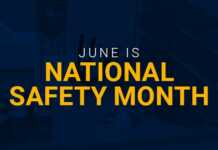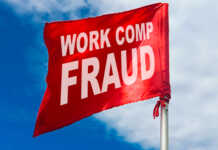All employees are responsible for workplace health and safety. No work environment is immune from potentially hazardous conditions, incidents, or practices. Companies and their employees can benefit from an organized, functional safety committee. The committee’s success will depend on the purpose, personnel makeup, responsibilities assigned, and support from company management.
Many states and industries require safety committees. Even if not required, having one as part of your organization is a best practice because safety becomes a shared responsibility between management and employees. Safety committee members are responsible for developing and reviewing safety procedures and policies, investigating and reviewing accidents, and communicating safety issues or policies to company employees.
A productive safety meeting starts with having a set safety meeting agenda prepared. An agenda helps meetings flow smoothly so the group can accomplish its goals. An example of a safety committee meeting agenda is member attendance, reviewing the last meeting minutes, reviewing current goals, and discussing new ones.
To make the committee most effective, consider these best practices:
- Develop a written mission statement – Define the duties and responsibilities of the members. Identify and prioritize goals.
- Regularly scheduled meetings – Attend regular meetings to discuss recent incidents and suggestions.
- Review accident investigation forms – Reviewing the circumstances of accidents will help you see if there are patterns and help prevent them in the future.
- Review your claim trends – Analyze patterns in your workers’ compensation claims not just annually but over the span of a couple of years.
- Conduct inspections – Review your inspection process to identify operational hazards and observe employee work methods.
- Eliminate hazards and correct employees’ unsafe behaviors – Unsafe conditions and behaviors must be corrected and eliminated.
- Promote safety – Remind employees of the importance of safety to increase their awareness of hazards.
- Take action – Following up and taking action is key. Make corrections quickly. This might require increased safety training, additional equipment, or safer work methods.
How do we put the committee together now that we know what to do?
- Appoint a leader – Select someone with leadership skills and a working knowledge of the company.
- Membership – The committee should be comprised of an equal number of management and non-management employees representing all company areas.
- Membership should be round-robin style – Allow employees to cycle in and out of the committee to prevent fatigue. Prevailing opinions of committees are that they are generally comprised of a group of the unprepared appointed by the unwilling to do the unnecessary.
- Document the committee’s meetings – The committee’s designated secretary should prepare a record of the meeting’s minutes.
- Disperse the information – Information about the committee’s meeting should be made available to all employees in a manner that best allows information to travel back and forth from management, employees, and the committee.
Additional considerations
- Gather suggestions from employees, report them to the committee, and make appropriate recommendations to management.
- Management must be involved. Effective safety programs must be management-led and employee driven.
The National Safety Council has a five-page sample guide that details a committee’s functions, objectives, duties, and agenda guidelines. You can view it here.
Every company can benefit from having an organized and functional safety committee. It will not only create a safer work environment but also help involve more employees in your company’s monitoring, education, investigation, and evaluation of the safety effort. This can ultimately impact the company’s bottom line by reducing the number of costly accidents and injuries.
If you have any questions or need assistance establishing a safety committee at your workplace, please contact ICW Group’s Risk Management team.

















